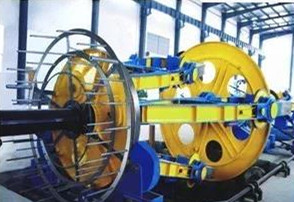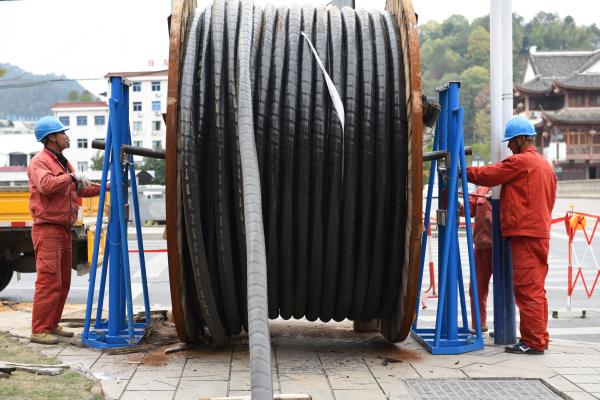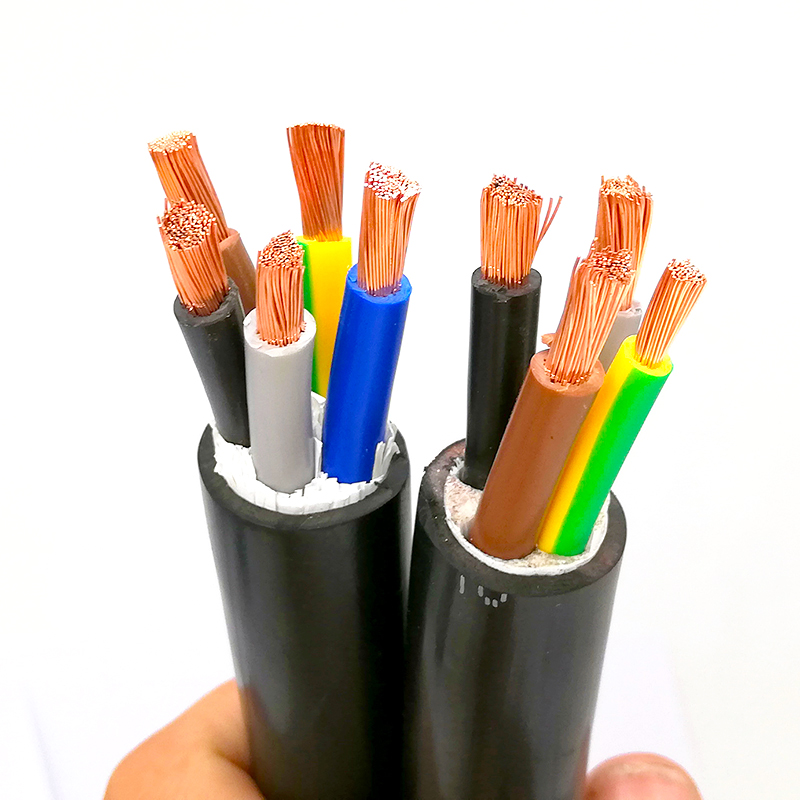
1、 What is cable formation
Definition of cable forming: the process of twisting multiple insulated cores into AAC Cables according to certain rules.
2、 The role of cable forming in cable production
Cable forming is one of the important processes in the production of multi-core cables. The three core, four core (one core is the ground wire) and five core (one core is the ground wire and the other is the neutral wire) of the three-phase power supply is commonly used for power cables. The number of control cable cores is more (more than 2 cores to 61 cores). During the cable forming process, several insulated cores are twisted together according to certain rules, The process of forming a multi-core cable. In addition to the stranding, the process of cable forming includes filling of the gap between the cores of the insulated wires, wrapping and shielding on the core after the cable forming.
When forming cables, the twisted form of insulation core adopts concentric normal stranding. If the diameter of the insulated core is identical, it is called symmetrical cable forming. If the diameter of the insulation core is different, the cable formation is called asymmetric cable formation. In order to avoid the influence of torsional stress on the core during the process of cable forming, the cable forming machine with the torsion device or bow shaped cable forming machine is used for the cable forming of circular insulated core to conduct the twisting and twisting.
3、 The way of cable forming
There are two ways to twist the strand and the cable, one is to twist back and the other is not to twist.
The rewinding and twisting is that the cable tray frame equipped with the setting out plate keeps the setting out plate at all times horizontal position when the machine rotates by means of the special device (the torsion device) on it. When the cable is formed, the insulation core is only subjected to the bending action, but does not twist. The back twisting is often used in the process of forming the circular insulated core. The core has no rebound stress after the cable forming, which can ensure the accuracy of the roundness and diameter of the cable.
The non twisted twisted cable is mostly used for the formation of fan-shaped lines. After the compression of the die, it becomes plastic deformation, thus eliminating the original torsional stress and ensuring the round after the cable is formed.

4、 Cable forming direction and pitch diameter ratio
The cable forming direction is generally right. The confirmation of cable forming direction is in the direction of ACSR Cable core forward, if the cage turns left, it is right direction, otherwise, otherwise, it is opposite.
The ratio of cable pitch diameter is different according to different types of cables. The circular core insulated by cross-linked polyethylene is hard and the diameter of cable forming is larger, with a disk of 30-40; The pitch diameter ratio of PVC insulated power cable is 30-40, and that of sector line is 40-50; The diameter ratio of the cable core of plastic insulated control cable is specified in the national standard, and generally it shall not be more than 16-20.
5、 Stranding coefficient and twist rate
In a pitch of the cable forming, the ratio of the actual length of the insulation core to the length of the pitch of the cable is called the stranding coefficient (k=l/h);
The stranding rate is the ratio between the difference between the actual length of the insulating core and the length of the cable forming pitch and the length of the formed pitch within a cable forming pitch λ=( L-H)/H × 100%
It is convenient to adopt the coefficient K, and the K value is always greater than 1. Thus, the actual value of K is increased by one K value for the single insulated core after the cable forming. The resistance of the core is proportional to the core, that is, the resistance of the core is also increased by a k value. If the insulation resistance is inversely proportional to the length of the insulating core, the insulation resistance of each core will be reduced by a k value. From the angle of reducing the core resistance and increasing the insulation resistance value, it is hoped that the smaller the coefficient of cable winding is, the better.
The ratio of the cable formation to pitch ratio is inversely proportional to the square of the pitch ratio. Therefore, the smaller the pitch ratio, the greater the coefficient of the cable formation, the greater the amount of insulating core material is, otherwise, from the perspective of saving the material consumption, the smaller the coefficient of cable formation is, the better.
6、 Wrapping process
The production process of wrapping all kinds of metal or non-metallic materials on the core or core of the guide cable is covered with the specified pitch spiral in the form of ribbon or wire.
7、 Non armored cable wrapping
In order to prevent the cable core from deformation after the cable forming and to prevent the adhesion with sheath, the insulating core shall be wound with the wrapping layer while forming and filling on the cable forming machine. For the non armored plastic insulated cable, the 1-2-layer non-woven fabric belt is usually wrapped by covering (the first layer or two layers are used for the specific purpose, and the principle of cable forming and tightening is adopted), The covering size is 10% – 15% of the bandwidth, and the wrapping angle is 25% °~ forty ° Within the scope.

8、 Armouring of cables
Steel belt armored cable is mainly suitable for underground direct burial, and can bear certain mechanical pressure; Steel wire armored cable is mainly suitable for laying with drop or vertical, and can bear large mechanical tension. Armored cable is mainly divided into steel strip armor and steel wire armour, and their combination armouring mode.
If there is shielding material (including unified shielding) on the core of the steel belt armored cable, the cable core shall be replaced by the extruded insulating sleeve instead of the inner layer. If the insulation core has no metal shielding layer, the inner layer of the insulation wire can be extruded or wrapped. The inner layer of the wrapping is generally PVC or PE and other similar strip.
Generally, the steel wire armored cable adopts the extruded inner layer.
For the model of armored cable, such as yjv22, there will be two numbers, the first number is the armor Code: generally, there are 2, 3 and 4 numbers:
2 – indicates double layer steel belt armor
3 – indicates the thin steel wire armouring
4 – indicates the thick steel wire armouring
The steel strip thickness and copper clearance of armored cable, wire diameter and clearance of steel wire armored cable shall meet the relevant standards.
